Make your classroom more inclusive all year long by using these short texts by LGBTQ+ authors for Secondary ELA. These LGBTQ short stories and texts can be used to teach a variety of skills and concepts in your middle or high school class to enrich your young readers.
Are you having a hard time increasing the representation in your Secondary ELA curriculum? You do not have to wait until October (LGBTQ+ History Month) or June (Pride month) to have a good reason to represent LGBTQ+ voices. Here are short story collections by LGBTQ+ authors that you can use year-round and connect to topics and skills you’re already teaching.
Short Texts by LGBTQ+ Authors for Secondary ELA
“At Seventeen” (song)
Janis Ian
This song gives students a great chance to analyze the author’s purpose and meaning. Students can listen to and read the lyrics, and then answer some guiding questions like:
- Do you agree with Ian’s assessment of society – what she calls “the truth” – why, or why not?
- What do you think might have led Ian to form these opinions?
- Do you think Ian would say the same things if she wrote the song today instead of 1974?
- What do you think she meant by the lyric “they only get what they deserve”?
- Compare the words that Ian uses to describe herself versus others, and what does this say about Ian’s opinion of herself?
- Do you believe it’s possible to have self-confidence while describing oneself as “ugly,” why or why not?
- What is the “game” that Ian is referring to?
This song could also be a jumping-off point to talk about positive self-talk and words of self-affirmation. Here are 5 ways to help students practice positive self-talk from a young age. Students who feel more positively about themselves are more open to learning. Over on the Secondary English Coffee Shop blog, I share an activity to help students practice asset-based thinking.
Want more ideas for using music in the classroom? Check out this post!
“The Master’s Tools Will Never Dismantle the Master’s House.” (speech)
Audre Lorde
In 1984, Audre Lorde (an established poet and Black lesbian feminist) was asked to speak on a panel at the New York University Institute for the Humanities Conference. She notes in her speech that she was one of a couple Black woman, both asked at the last minute as an afterthought, and the only lesbian. Lorde explains that she still sees racist, classist power struggles at play, even in the liberal goal of feminism.
Students can read this speech and consider what rhetorical devices and structures Lorde uses to make her points. It’s particularly interesting to see how Lorde incorporates an extended allusion to Shakespeare’s The Tempest. You could use that as a natural bridge within your Shakespeare unit, since it shows how writers and artists still connect to Shakespeare and still use his words to move their audience. Lastly, students can discuss how Lorde’s points are still relevant in today’s fight for racial justice and women’s rights.
“Robo-Liopleurodon!” (Short Story)
Darcie Little Badger
This (very!) short story is a fun sci fi adventure with a plot twist! In 900 words, Little Badger tells the story of a marine science vessel under attack by a mysterious creature.
This is one of my favorite stories because it is very versatile! If you want a deep discussion, use this story as a jumping off point for exploring vigilante justice and when crime could be considered justified. If you want a fun writing activity, use this story as a model for literary fiction.
Flash fiction is very short fiction that’s written quickly. This helps students turn off the internal critic that can sometimes keep them from finishing a story. After reading this story, students can spend half an hour writing their own (very!) short science fiction story about a mysterious creature.
Darcie Little Badger also wrote Elatsoe, one of my favorite books of 2020. Be sure to check out other recommendations of Indigenous Literature for Secondary ELA.
“The Hope Speech” (Speech)
Harvey Milk
Are you teaching LGBTQ+ history in your classroom? It’s not enough to have a diverse classroom library, or decorate for Pride; it’s vital that students know the stories of Queer trailblazers like Harvey Milk, Marsha P. Johnson, Sylvia Rivera and the crucial role they played in society. With most middle and high school students having no memories of a time before marriage equality, it’s easy for them to take for granted the struggles that the LGBTQ community has experienced for a long time.
After reading Milk’s speech, students can to research ways that laws and public opinion have changed since 1978, as well as examples of inequality that still exist today.
Want more MS texts with LGBTQ+ representation? Check out this blog post!
“Ode to the Medieval Poets” (Poem)
W. H. Auden
Auden’s “Funeral Blues” is a staple of many poetry units, so I wanted to choose something a little more obscure. (BTW, when you’re teaching “Funeral Blues,” a poem about the death of a life partner, you are giving the students the context that Auden was a Gay man, right?)
This poem is a good fit for analyzing an author’s purpose. What distinctions does he make between the lives of those “medieval poets” and contemporary poets like himself? This is also an opportunity to have students analyze irony.
“Hilda” (Short Story)
Truman Capote
This very short story (only five pages!), is a great example of an author subverting our expectations. Students can pause after the principal confronts the main character about the stolen items and speculate about the rest of the story. Is Hilda the thief? Will she confess? What is her motivation? How will the story end?
After reading, students can reflect on Hilda’s character, and how her thieving seems to be almost a subconscious act, a secret even from her. Or, given her life’s goal of becoming an actress, is Hilda merely pretending to be innocent?
I also think this story is an excellent choice for some creative reading, which you can read about in this blog post.
You can find this short story in the collection The Early Stories of Truman Capote.
Want these kinds of teaching tips and ideas delivered right to your inbox? Sign up for the Nouvelle ELA newsletter!
“Praise Song to Stone” (Poem)
Qwo Li Driskill
This poem describes a car accident and recovery, seemingly in slow motion. The speaker thanks in great detail everything involved, seen and unseen, in a way that gives the poem an almost meditative quality. Students can analyze the form of the poem and consider how the repetition affects the poem. What other poetic devices does Driskill use?
“The Girl with the Blue Lantern” (Short Story)
Tess Sharpe
This short story follows a poor girl, responsible for keeping her family fed, as she stumbles upon a mysterious source of gold in the woods. This story is perfect for teaching suspense!
It has an overall theme of gold as both a gift and a curse, which makes it a great companion to stories like “The Monkey’s Paw” or “The Gift of the Magi.” Sharpe also uses a ton of beautiful similes as the narrator tries to make sense of the unfamiliar experiences she’s having.
You can find this short story in All Out, an anthology of historical fiction featuring LGBTQ+ authors and protagonists. You can find my other recommendations for short stories anthologies here.
Prison Letters from CeCe McDonald
CeCe McDonald is a Black Trans woman who was imprisoned after defending herself in a transphobic attack at a bar. She wrote letters and poetry during her imprisonment (in a men’s prison), starting her career as an LGBTQ+ activist.
Students can read the first of McDonald’s prison letters here. You could use this piece as inspirational reading. Students can reflect on their own views of their life’s potential. You could also pair this letter with Dr. Martin Luther King’s Speech “Life is a Blueprint” so that students could compare the two metaphors. Students could also dig deeper into the story of justice and injustice in McDonald’s story as part of your unit on To Kill a Mockingbird.
“Catch, Pull, Drive” (Short Story)
Schuyler Bailar
This short story, appearing in the anthology Fresh Ink, draws from Bailar’s experience as a transgender athlete. Bailar was the first transgender man to compete in the NCAA Division I Men’s Swimming and continues to be an advocate for LGBTQ+ rights in student athletics. Read his extended Instagram post on trans women in sports.
You could use the short story in your personal narrative unit, since Bailar draws from his experiences. You could also pair this with a nonfiction reading or interview about the author. This story is most suitable for high school students and merits a trigger warning for transphobic slurs directed toward the narrator.
I chatted with the editor of Fresh Ink, Lamar Giles, on this episode of the YA Cafe Podcast.
If you’re looking for more HS texts with LGBTQ+ protagonists, I have a blog post on that!
Final thoughts:
Even though the required reading list in the united states might be filled with dead, straight, cis, white men, you can still celebrate different people and inclusion in your classroom. I have a recent blog post about making your classroom a safe space for LGBTQ+ students, and having LBGTQ+ representation in your reading material (year-round!) is a great start.
I hope this post helped you find some great LGBTQ literature that you can use in your classroom! Let me know which one you’re most excited to use in the comments!
Happy teaching 🙂

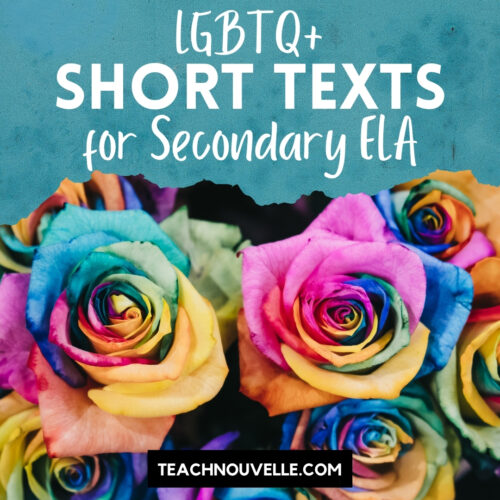
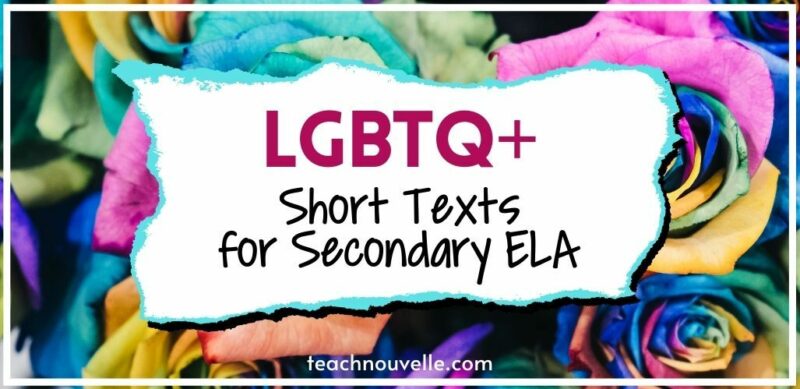
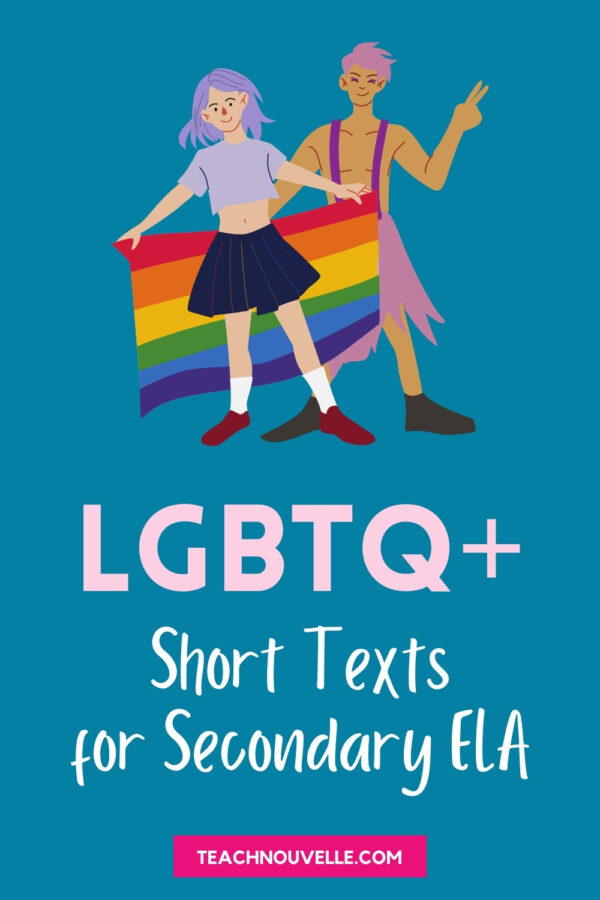
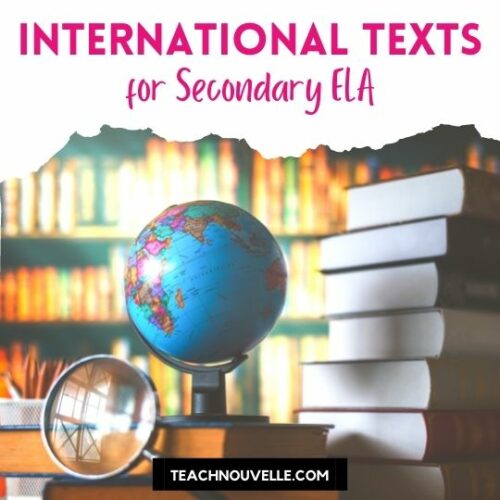
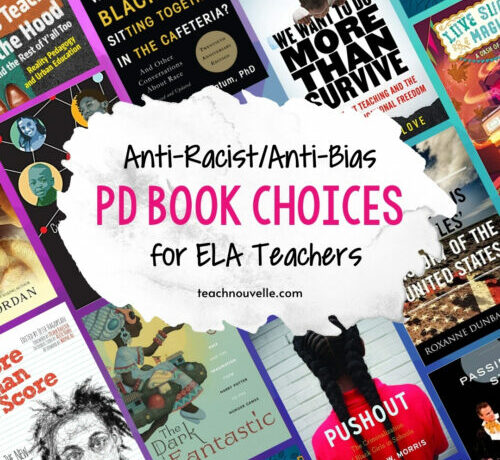
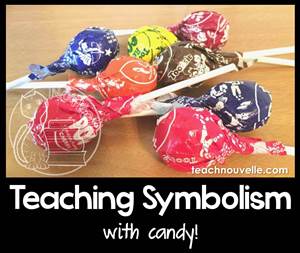
1 Comment
Trinity
March 14, 2022 at 7:44 pmGreat!!Thank you for those suggestions. I only knew one of those (Catch, Pull, Drive – wonderful)